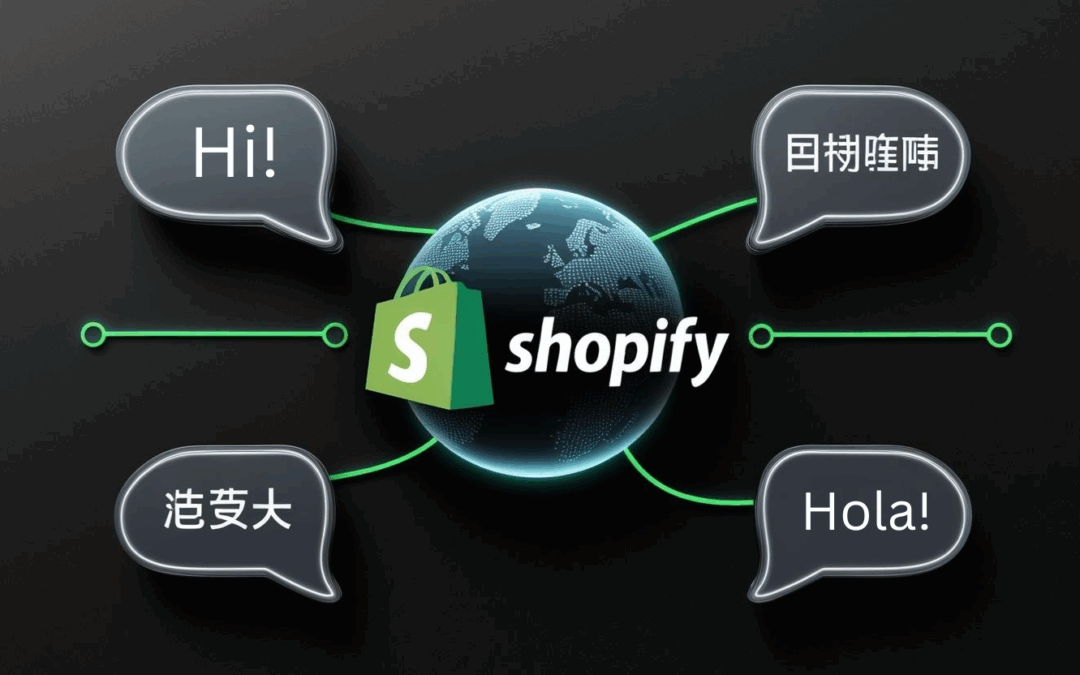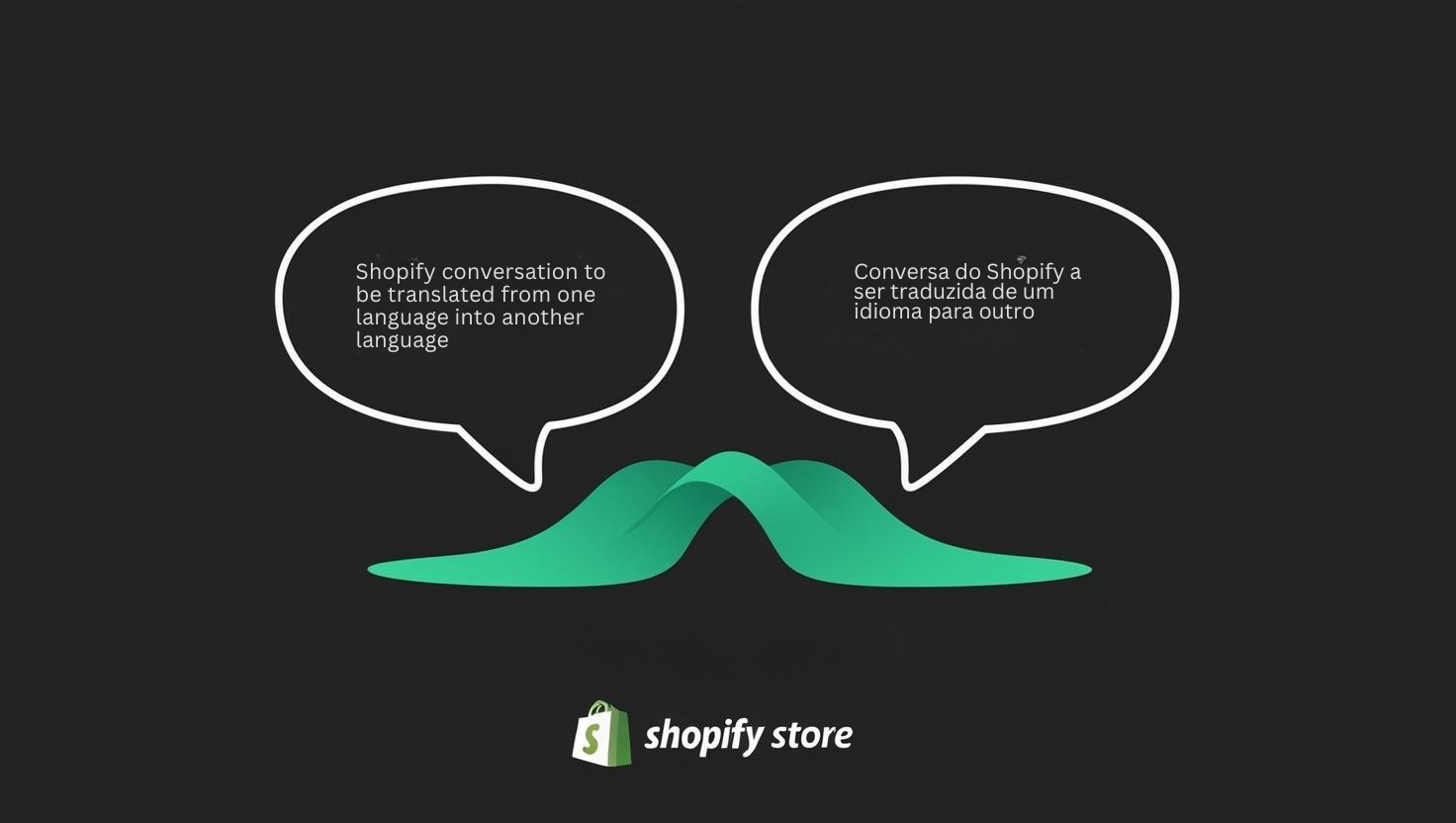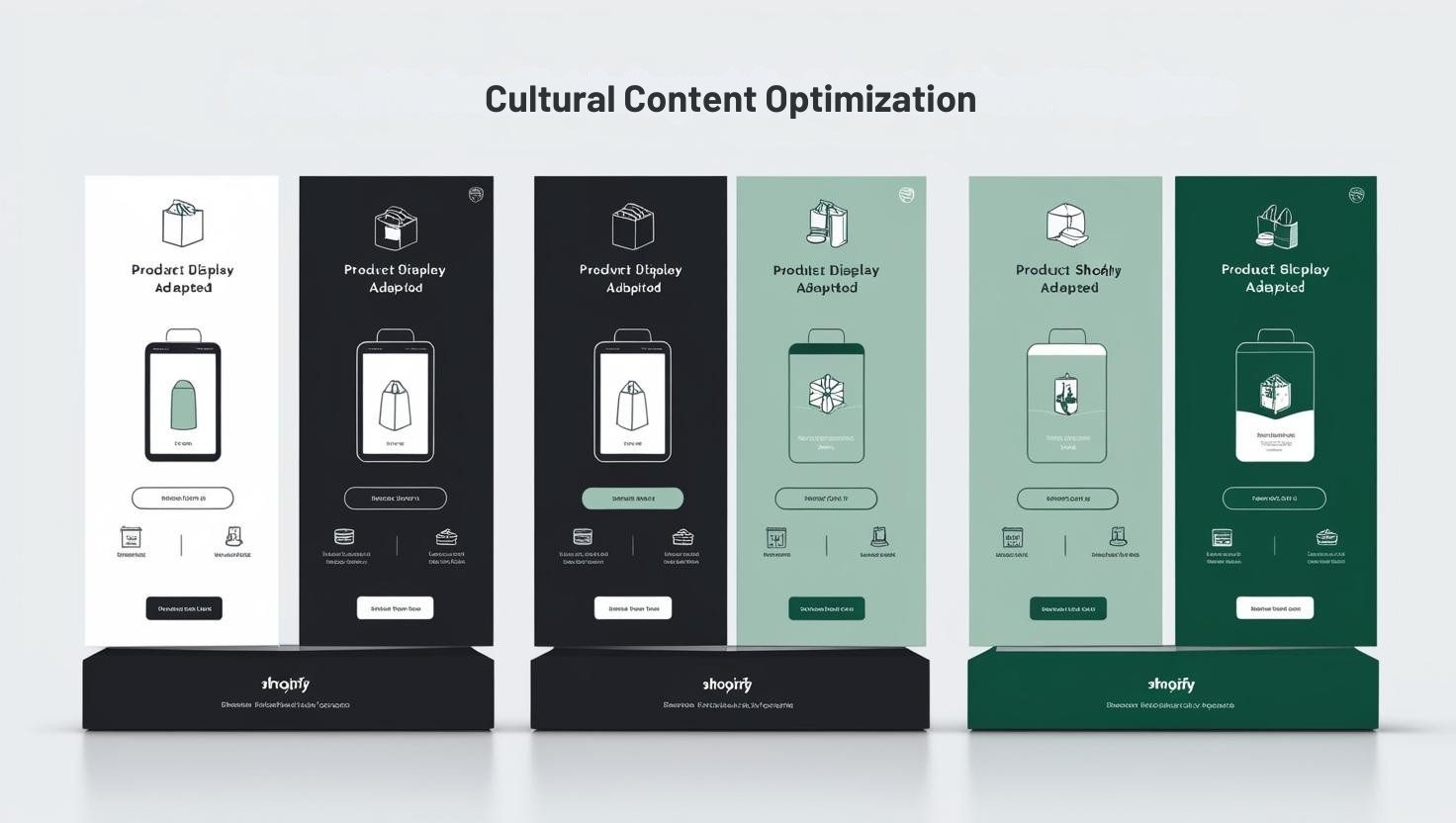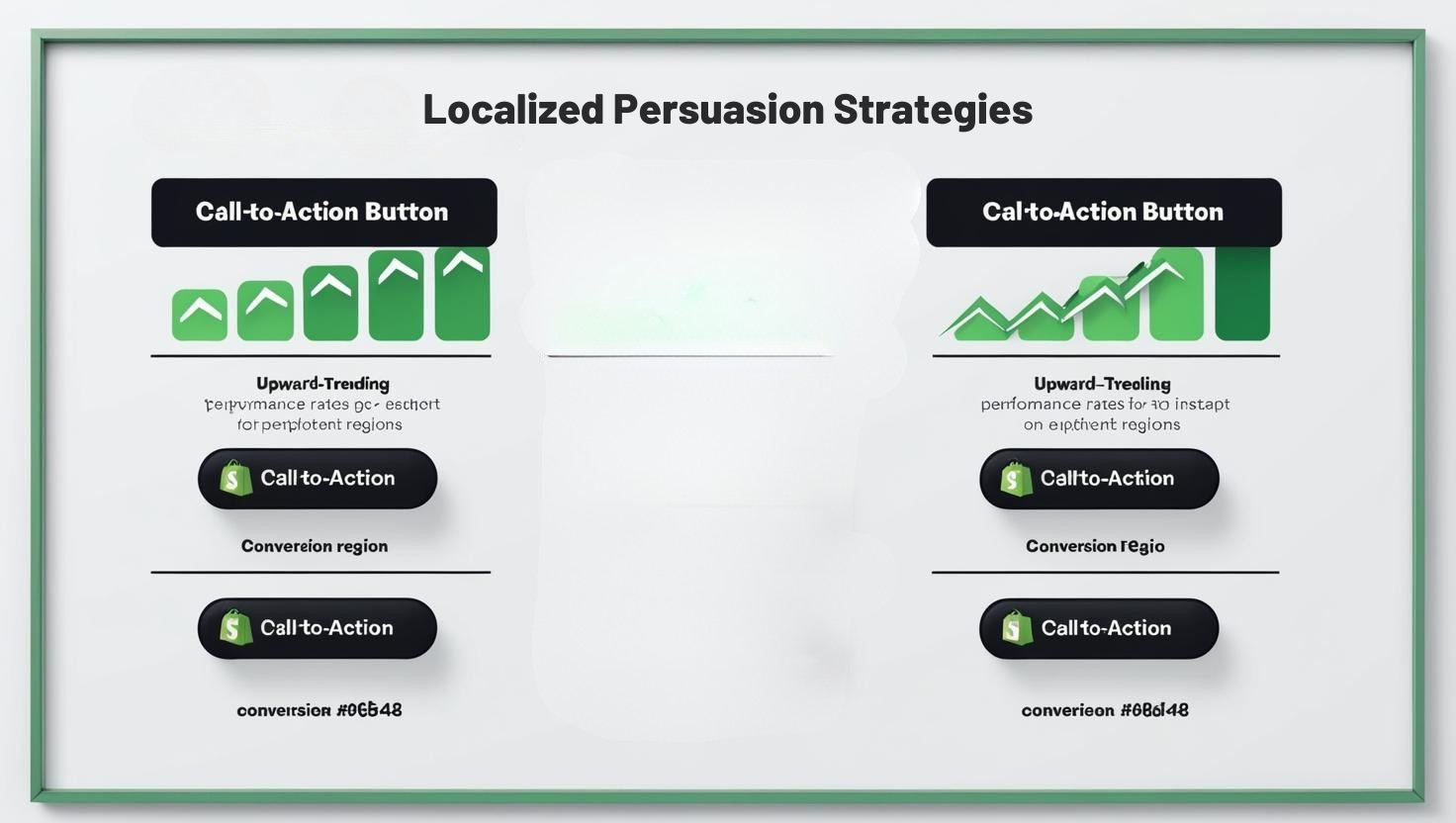Read More
Step-by-Step on SellerADvantage.co.uk
Read on LinkedIn
Read on Medium
Watch on YouTube
Multilingual AI: Selling Globally Without Language Barriers
Introduction
In today’s interconnected digital economy, the opportunity for Shopify store owners to expand beyond domestic markets has never been more accessible or lucrative. Yet, language barriers remain one of the most significant obstacles preventing many e-commerce businesses from successfully tapping into international customer bases. Traditional approaches to multilingual e-commerce—such as maintaining separate storefronts for each language or hiring translation teams—are often prohibitively expensive and operationally complex for small to medium-sized businesses. This is where multilingual AI sales assistants represent a revolutionary advancement, offering Shopify merchants the ability to communicate with customers in their native languages without the traditional overhead costs or logistical challenges associated with global expansion.
Recent market research underscores the commercial imperative of addressing language barriers in e-commerce. Studies consistently show that 75% of global consumers strongly prefer to make purchases in their native language, while 60% rarely or never buy from English-only websites. Even more compelling, customers who browse in their native language spend up to 3.6 times longer on websites and demonstrate conversion rates that are 70-100% higher compared to those struggling with content in a second language. These statistics highlight not just a preference but a fundamental economic reality: speaking to customers in their language directly impacts your bottom line. For Shopify store owners looking to scale internationally, multilingual capabilities aren’t merely a nice-to-have feature but a critical competitive advantage in capturing and retaining global market share.
The technological landscape for multilingual AI has undergone a dramatic transformation in recent years. Early machine translation systems, notorious for their awkward phrasing and contextual errors, have been replaced by sophisticated neural network models that understand cultural nuances, idioms, and industry-specific terminology. Today’s multilingual AI sales assistants can seamlessly switch between dozens of languages while maintaining consistent brand voice, technical accuracy, and cultural appropriateness. They can handle complex product inquiries, process transactions, and provide customer support with near-native fluency. Perhaps most importantly, these systems learn and improve through interaction, continuously refining their understanding of language patterns and customer needs specific to your product categories and target markets. This technological maturity means Shopify merchants can now confidently expand into new language markets without compromising on customer experience or brand integrity.
Key Action Points
1. Deploy Real-Time Translation for Customer Interactions
The cornerstone of an effective multilingual strategy is implementing real-time translation capabilities across all customer touchpoints. Today’s advanced AI translation systems go far beyond the basic text conversion of earlier technologies, offering contextual understanding and conversation flow that maintains the subtleties of natural communication. By integrating these capabilities into your Shopify store, you enable seamless interactions with customers regardless of their native language. This encompasses not just product descriptions and checkout processes, but crucially, all interactive elements including live chat, customer support tickets, and even user-generated content such as reviews and questions. The technology automatically detects the customer’s language preference—either through browser settings or explicit selection—and dynamically renders all content in that language without requiring separate storefronts or duplicate content management.
Implementation begins with selecting a multilingual AI solution that integrates directly with Shopify’s architecture. Look for systems offering neural machine translation (NMT) rather than older statistical methods, as NMT provides significantly higher accuracy and natural-sounding translations. The solution should support at least 20-30 major global languages with particular strength in your target market languages. Equally important is real-time performance—translations should occur with minimal latency to maintain natural conversation flow. Once integrated, configure language detection to work automatically while still giving customers manual language selection options. Finally, establish a quality assurance process where native speakers periodically review translations of key content areas to identify any recurring issues that require customization or training of the AI system.
The impact of real-time translation extends beyond mere convenience into measurable business outcomes. Merchants implementing comprehensive multilingual AI solutions typically report 30-45% increases in international traffic within three months, with conversion rates in non-English markets improving by 70-100%. Customer service metrics also show significant improvement, with satisfaction scores from non-native English speakers increasing by an average of 35% after implementation. These performance gains stem from removing the fundamental friction that language barriers create in the customer journey. When customers can effortlessly understand product features, ask questions, and complete transactions in their native language, they experience the same level of confidence and comfort as domestic shoppers—translating directly into higher conversion rates and stronger customer loyalty.
2. Optimize Product Content for Cultural Relevance
Language translation alone is insufficient for truly effective global selling. Successful international merchants understand that cultural context dramatically influences purchasing decisions, requiring thoughtful adaptation of product content beyond literal translation. Multilingual AI can analyze cultural preferences and consumption patterns across different markets, helping you tailor product descriptions, imagery, and marketing messages to resonate with specific cultural sensibilities. This might involve emphasizing different product features, adjusting tone and formality levels, or recognizing cultural taboos and sensitivities that could impact reception. For example, color associations, numerical symbolism, and even product naming can carry vastly different connotations across cultures—distinctions that sophisticated AI systems can navigate to ensure your messaging hits the right notes in each market.
Begin cultural optimization by conducting AI-assisted market research for each target region, identifying key cultural dimensions relevant to your product category. Configure your multilingual AI to flag potentially problematic content and suggest culturally appropriate alternatives during content creation. Develop region-specific content templates that maintain your core brand identity while accommodating cultural preferences in structure, tone, and emphasis. Implement A/B testing frameworks to compare performance of different cultural adaptations, allowing data to guide refinement over time. Finally, establish feedback loops with customers in each market, collecting insights that help train your AI to better understand the subtle nuances of cultural preferences in different regions. This systematic approach ensures that cultural adaptation remains grounded in real market insights rather than stereotypes or assumptions.
The business impact of cultural optimization is particularly evident in products with emotional or aspirational dimensions. Merchants implementing cultural adaptation strategies typically see 25-40% higher engagement rates with product content compared to simply translated materials. Average order values in culturally optimized storefronts increase by 15-20% as customers develop stronger connections with products presented in culturally resonant ways. Perhaps most significantly, markets that receive culturally adapted content show 30% higher customer retention rates and significantly more word-of-mouth referrals. These metrics reflect the deeper customer connections that emerge when products are presented not just in the right language but in the right cultural context. By leveraging AI to navigate these cultural dimensions at scale, Shopify merchants can achieve levels of international market customization previously available only to global enterprises with extensive local teams.
3. Implement Localized Persuasion Strategies
Persuasion techniques and decision triggers vary significantly across cultures, directly impacting conversion optimization strategies. What constitutes effective persuasion in North American markets may fall flat or even create negative impressions in Asian or European contexts. Advanced multilingual AI systems can identify and implement culturally-appropriate persuasion strategies throughout the customer journey, from initial product discovery to final purchase decision. These systems analyze regional differences in factors such as authority perception, social proof weighting, scarcity response, and risk tolerance, then automatically adjust persuasive elements accordingly. For instance, some cultures respond strongly to expert endorsements while others prioritize community consensus; some markets are motivated by exclusivity while others value widespread popularity. By tailoring these persuasive elements to cultural preferences, you create purchasing environments optimized for each market’s distinct decision-making patterns.
Implementation involves configuring your AI system to apply different persuasion frameworks based on customer location and language. Begin by mapping key decision points in your customer journey and identifying the persuasive elements present at each stage. Develop cultural variants of these elements—such as different social proof formats, urgency triggers, or trust signals—that align with regional preferences. Program your AI to dynamically select and present the most culturally appropriate variant based on the customer’s detected market. Monitor performance metrics for each variant across different regions, continuously refining your understanding of what motivates conversion in each market. When implemented systematically, this approach transforms general-purpose persuasion techniques into precision tools calibrated for maximum effectiveness in each cultural context.
The conversion impact of localized persuasion strategies is substantial and measurable. E-commerce sites implementing culturally-adapted persuasion techniques typically see 50-80% higher effectiveness of call-to-action elements and 30-45% increases in first-time purchase completion rates among international customers. Abandoned cart recovery efforts show similarly dramatic improvements, with recovery rates in non-domestic markets increasing by 35-60% when recovery messages employ culturally-aligned persuasion approaches. These performance gains reflect the fundamental truth that purchasing decisions are never made in a cultural vacuum—the psychological triggers that prompt action are deeply embedded in cultural frameworks. By leveraging AI to navigate these differences at scale, Shopify merchants can implement sophisticated persuasion strategies that would otherwise require extensive local marketing expertise in each target market.
Final Thoughts
The implementation of multilingual AI sales assistants represents far more than a technical upgrade for your Shopify store—it constitutes a fundamental reimagining of how global e-commerce can function. By eliminating language barriers, these systems democratize international selling, allowing businesses of all sizes to compete for global market share that was previously accessible only to enterprise-level organizations with extensive resources. For ambitious Shopify merchants, this technology opens doors to exponential growth opportunities by transforming the entire global market into potential customers, rather than limiting your business to the fraction of consumers who speak your language. The compounding effect of addressing multiple international markets simultaneously creates growth potential that dramatically exceeds what’s possible within a single-language strategy.
Looking forward, multilingual AI capabilities will likely become table stakes for competitive e-commerce businesses rather than a distinguishing feature. Early adopters currently enjoy significant advantages in international markets where customers are delighted to find shopping experiences available in their native language. As these capabilities become more widespread, this advantage will diminish—making now the ideal time to implement and establish your brand presence in international markets. Furthermore, multilingual AI systems become more valuable over time as they learn from interactions, building increasingly sophisticated understanding of your specific product terminology, common customer inquiries, and market-specific preferences. This means the competitive advantage gained from early implementation compounds over time as your system develops deeper specialization in your particular business context.
Perhaps most importantly, multilingual AI allows Shopify merchants to maintain authentic human connections with customers across language boundaries. The technology doesn’t replace the human elements of your brand but rather extends their reach, allowing your unique voice, values, and expertise to resonate with customers regardless of their native language. In an increasingly global marketplace where consumers have endless options, these authentic connections become crucial differentiators that build lasting customer relationships and sustainable business growth. By investing in multilingual AI capabilities today, you position your Shopify store at the forefront of a more inclusive, accessible approach to global commerce—one where language differences no longer determine market opportunity, and where your unique offerings can find their audience regardless of where or in what language they shop.
Any follow helps us out a lot – Thank-You!
If you like this article and want to explore further insights, discuss collaborative opportunities, or simply connect, please feel free to reach out to me on any of the following :
Work With Us
Hire Us on fiverr
Hire Us on upwork
🔴Book a FREE PPC Audit🔴







